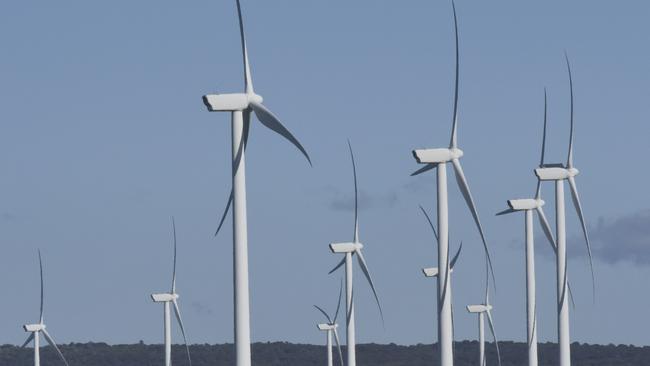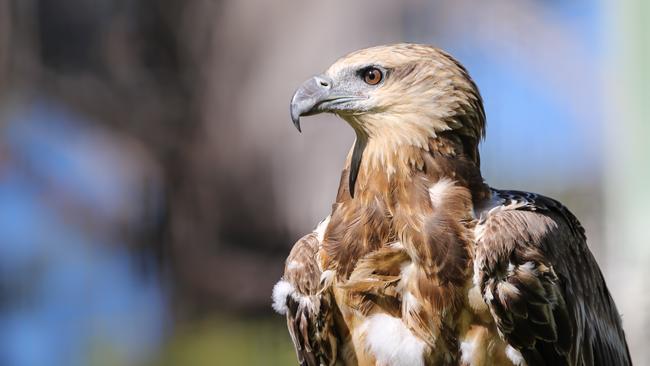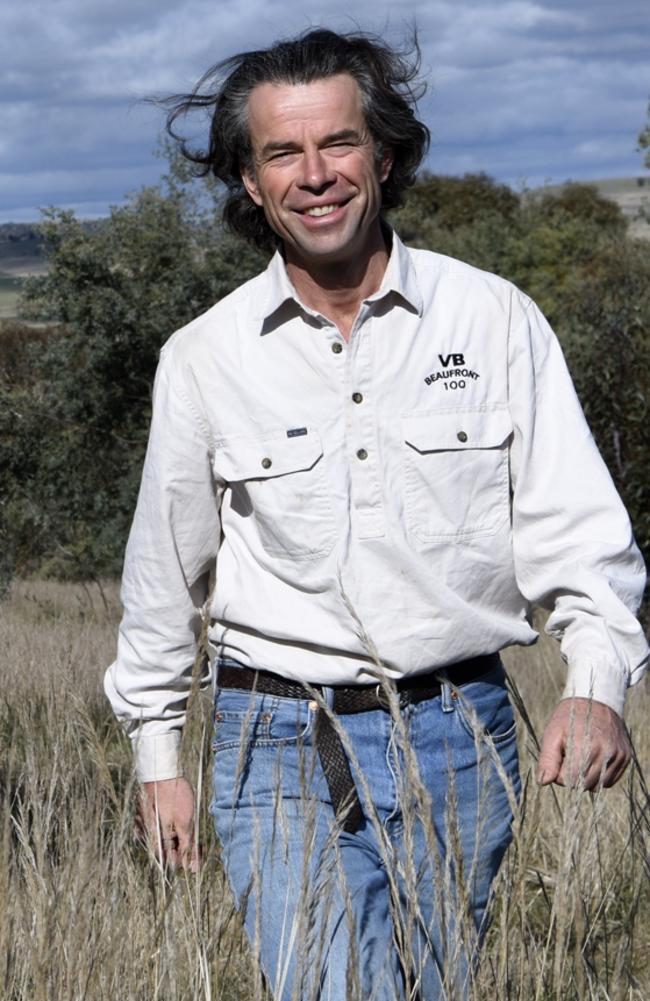North-East Wind: Criteria set for possible 210 turbine Tassie farm
Government agencies and the Premier’s department have listed the topics, including potential acid sulfate soils and disturbance to breeding eagles, which need addressing.

Politics
Don't miss out on the headlines from Politics. Followed categories will be added to My News.
An application for up to 210 wind turbines in North-East Tasmania would need to address potential acid sulfate soils, the likelihood of uncovering Aboriginal sites of significance and disturbance to breeding eagles to be considered for approval, documents released by the planning commission show.
Dorset Council revealed in July it had fielded a proposal by ACEN Australia to construct up to 210 turbines across two locations, Rushy Lagoon in the east and Waterhouse in the west, with generation capacity of up to 1260MW.
The farm would cost $2.7bn and have an operational life of 25 years, with an option to extend to 50 years if refurbished.
Planning Minister Michael Ferguson granted ACEN’s request for ‘Major Project’ designation, allowing for better co-ordination between council, the proponent and the state government.
Now, in the next stage of the process, government agencies have listed the criteria the project would be judged by.
The EPA said the proposal would need to show how “eagle food resources (e.g. carcasses) will be managed across the site to address collision risk” and how turbines serviced by roads within 1km of nests would avoid disturbing eagles during the breeding season.

The farm has the “potential for impact” on a variety of Tasmanian birds, including the Eastern curlew, wedge-tailed and white-bellied eagles, fairy terns and short-tailed shearwaters.
Potential impacts on all avian species generally must be “avoided, minimised and mitigated and, if necessary, offset, such that the environment is protected and environmental degradation prevented,” the EPA said.
Impact on threatened flora and fauna was also of concern to NRE, with dozens of species likely to occur within, or within 500m, of the farms’ development footprints.
The Premier’s department said an Aboriginal heritage assessment would be required.
“Presently there are over 100 registered Aboriginal heritage sites within the Project Land, and
it is expected that with further research and more widespread survey effort, many more
(perhaps hundreds of) sites are to be identified,” the author of its assessment requirement notice said.
“It is unlikely that the major project will be able to completely avoid Aboriginal heritage, and therefore approvals in accordance with the Aboriginal Heritage Act 1975 will almost certainly be required.”
Well-known sheep grazier Julian von Bibra said he was a neighbour of one of the two proposed sites.

He wrote to the commission that he hoped the assessment criteria would address whether the farm would expand in future, if compensation would be provided for “potential negative impacts” such as “aesthetics (and) loss in land value”, and how birdlife would be protected.
The development of additional wind resources in Tasmania is viewed as key by energy players including Origin.
Its green hydrogen company, Origin Energy Future Fuels Pty Ltd, hopes to build a green ammonia plant at the proposed Bell Bay Hydrogen Hub.
Its feasibility study, published in July, said there would only be “sufficient generation and interconnection capacity within the system to support... load requirements” for its plant if new wind generation entered the network.





